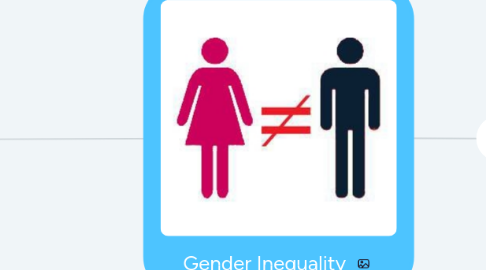
1. Who?
1.1. Who are the people/organisations that make the largest positive impact?
1.1.1. Orginisations
1.1.1.1. InterAction
1.1.1.1.1. They have online courses that you can take. Such as their course called Different Needs-Equal Opportunities.
1.1.1.2. Equality Now
1.1.1.2.1. They have campaigns for you to check out. Such as their campaigns called Beijing 20 or another one called Trafficking Survivor Stories .
1.1.2. People
1.1.2.1. Malala Yousafzai
1.1.2.1.1. She's from Pakistan and she spoke up to get girls an education. She ended up getting shot in the head, near her left eye, by the Taliban on her way back from school. She was flown to a hospital in Birmingham and miraculously survived. She proceeded to get what she wanted. Then in 2011 the president of Pakistan awarded her a National youth peace prize along with it.
2. Why?
2.1. Why should we care?
2.1.1. Women are being discriminated all over the world and it isn't fair.
2.1.2. In low income countries it is more severe, as in life threatening. But even in high income countries it happens.
2.1.3. In low income countries, women have to do all the housework and mostly aren't allowed to work to earn money for the family.
3. When?
3.1. When did women get the right to vote?
3.1.1. One of the first women to protest in 1791 was named Olympe de Gouges. She was a butcher's daughter.
3.1.2. The women's rights movement didn't get started until the late 1700s. This was only in Europe and the USA.
3.1.3. The rest of the world slowly gave women rights but some countries still haven't gotten to that stage today.
4. What?
4.1. What is gender inequality?
4.1.1. The act of males looking down on females and not seeing them as equal. Therefore women get payed less and in low income countries don't get the opportunity to work and earn money.
4.1.1.1. Women with full time jobs only earn 77% compared to a man with the same job.
4.1.1.2. 4 out of 5 people effected by human trafficking are girls.
4.1.1.3. African-American women earn 64¢, Latina women earn 56¢ to every $1 a Caucasian man earns.
4.1.1.4. Women worldwide aged from 15-44 are more likely to suffer from rape and domestic violence, than cancer, car accidents or Malaria.
5. Where?
5.1. Where are the countries that gender inequality occur most?
5.1.1. Mainly in low income countries.
5.1.1.1. Yemen
5.1.1.1.1. http://online.culturegrams.com/world/world_popupinterview.php?interviews_id=304&type=
5.1.1.1.2. Name:Fatima
5.1.1.2. Pakistan
5.1.1.3. Syria
5.1.1.4. Chad
5.1.1.4.1. http://online.culturegrams.com/world/world_popupinterview.php?interviews_id=343&type=
5.1.1.4.2. Name:Taroum
5.1.1.5. Iran
5.1.1.6. Mali
5.1.1.7. Saudi Arabia
5.1.1.8. Lebanon
5.1.1.9. Morocco
5.1.1.10. Jordan
5.1.2. Gender equality is something that high income countries have.
5.1.2.1. Iceland
5.1.2.2. Norway
5.1.2.3. Finland
5.1.2.4. Sweden
5.1.2.5. Slovenia
5.1.2.6. Ireland
5.1.2.7. New Zealand
5.1.2.8. France
5.1.2.9. Germany
5.1.2.10. United Kingdom
6. How?
6.1. How can we help?
6.1.1. Big Actions
6.1.1.1. Funding organisations that focus on helping gender equality.
6.1.1.2. Go to a low income country along with an organisation company and stand up to street violence or harassment targeting girls or women.
6.1.2. Everyday Things
6.1.2.1. If you have social media you can even use hashtags to bring attention to gender inequality.
6.1.2.2. Even supporting movies with female directors or leads.
